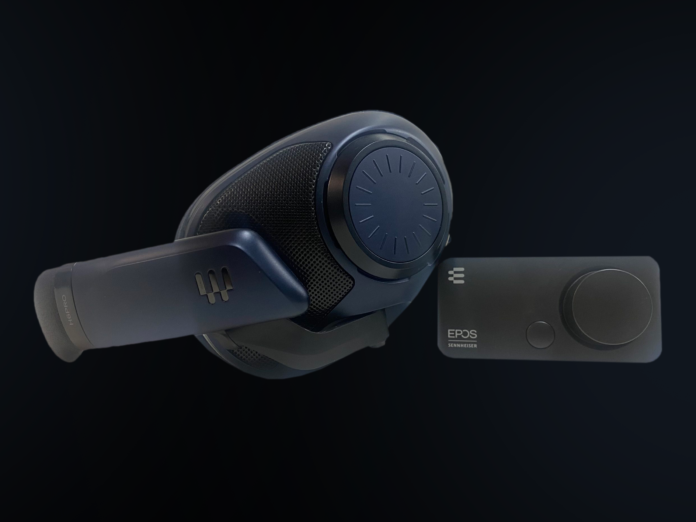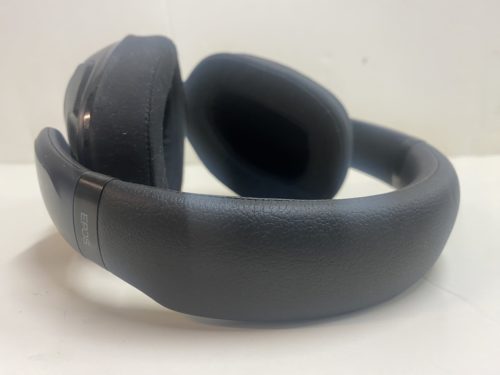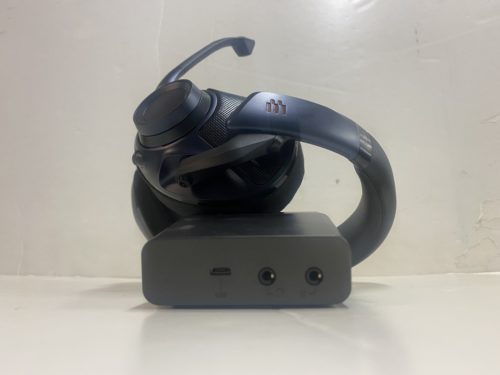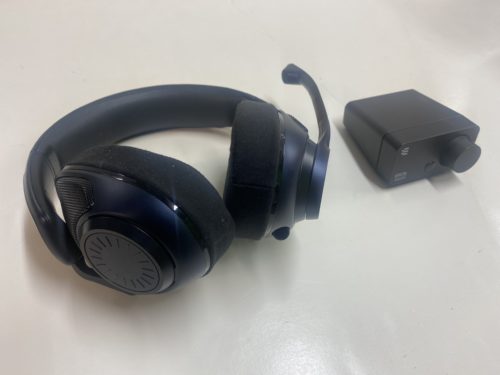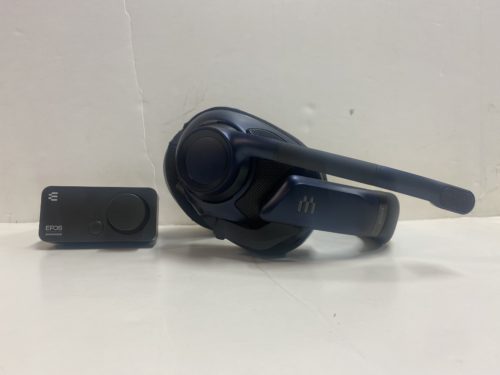EPOS has been making some of the best pro gaming headphones around, even after splitting from Sennheiser. I’ve listened to a couple of headphones from them, but this is the first time not only trying out one of their open-back models but one of their peripherals as well. The H6Pro and GSX300 are bundled together, promising more features when you pair them together. This review will talk about the headphones themselves as well as some of the customization you get with its bundled sound card.
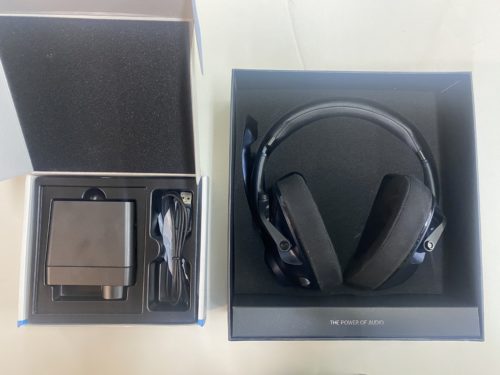
What You Get
H6Pro
- GSA 30 PC Cable
- GSA 30 Console Cable
- 2 X H6PRO Cover
- Safety Guide
- Quick start guide
GSX300
- USB type C cable
Look and Feel
Every EPOS headphone more or less has the same design. I’m a fan of its structure so I guess this is a case of “if it ain’t broke, don’t fix it.” The aesthetic is very elegant and when they come over your ears, they sit comfortably. I think people with smaller ears will find them more fitting than people with bigger ears, but even then, the H6Pro still feels cozy.
Design
Inside the H6Pro is a 42mm dynamic driver with a frequency response of 20-20kHz. There are two cables it comes with, but to connect the H6Pro to the GSX300, you’ll need to use the cable with two 3.5mm headphone jacks. With the GSX300, not only will your computer audio be upgraded, but you’ll be able to use the EPOS Gaming suite. This downloadable app offers an EQ and 7.1 surround sound, which is what I used for a lot of my testing. Pairing the headphones with the GSX300 is easy, but make sure you have the latest drivers installed.
Mic Quality
Testing the chat quality through discord, the mic ended up sounding decent, but nothing special. Other players can hear you clearly, but there is still some fuzz to the sound. I’m not expecting high-resolution audio from this mic, but some stronger resolution would be appreciated especially going for this price.
Soundstage
The primary focus of this review will be on how well the H6Pro performs in its soundstage. With the GSX300 and EPOS Gaming Suite desktop app, the experience of the H6Pro can be dramatically different. There isn’t just one way to listen, as the GSX300 offers an in-app EQ, and most importantly 7.1 surround sound in your headphones. Starting in standard stereo though, the H6Pro will deliver a wide area of sound to your games, music, or movies. Its spatial imaging operates naturally as your standard open-back headphones, giving you clear separation and layers between each individual element. I was actually impressed by how wide the H6Pro can go, with its ability becoming most apparent with music. Whether it’s the soundtrack to a game/film, or you’re just listening to music on your desktop, the H6Pro will fill out the left and right channels to the fullest extent it can.
However, the headphones aren’t as naturally dimensional as it is wide. Its front-to-back imaging isn’t as complex in stereo mode. This leaves a flat plain of sound in the middle that doesn’t communicate the scale of the environment all that well. With music, this might not be as much of a criticism, but in games, some effects can appear a little thin. When you switch on surround sound mode though, this issue is all but eliminated.
This is where you’re going to get that extra dimension for your games, and with the EPOS Gaming Suite, it is completely adjustable. There is a reverberation feature that helps expand the spatial properties of your audio even further. I should note though that doing this won’t always translate the fidelity of the sounds in the same way. EQ helps this in many ways, but it can’t always fix issues with the resolution of certain frequency bands. However, on a pure enjoyment factor, the effect is really cool. After playing a few games with it, going back to stereo mode almost felt wrong.
With the H6Pro and GSX300 I played a lot of Warhammer 40K: Darktide, which gave me a fantastic idea of its spatial potential. Just standing in the main lobby area waiting to start a match, the organ-heavy soundtrack, and background ambiance immediately sucks you into the world. The headphones provide balance to the sound placement, with music establishing the foundation of the stage and environmental sound effects heightening the scale of the setting.
Here, I boosted the reverberation quite a bit, as it made the sound design appear properly distant and airy. When you finally get into the action, the soundstage really shows its strengths. The music is heavier, and the effects take up much more space in the mix. It impresses me that the H6Pro was able to stack these elements on top of each other without any major compromise. Everything appears realistic and never too busy, even when you have hordes of heretics rushing at you.
Low End
In its standard flat response, the bass offers good punch, but you really need to give it a major boost if you want it to respond the way most games intend. For most of my time testing the H6Pro, I had the EQ boosted the most in the lows, adding a subtle reduction in the midbass for a smoother transition. With this adage of gain, the bass delivers a more prominent sub-bass, adding texture and rumble to many different sound design elements of games. Playing some Modern Warfare 2, I found the bass really came into its own on the H6Pro. Shotguns, grenades, and many other hard effects will give you that meaty impact you’re looking for, as long as you set your EQ in the right place.
Mids
Something never sat quite right with me in the midrange. The bands of frequency that get the most spotlight still come off a little hollow, while other regions just don’t feel like they have any considerable drive to them. I spent a significant amount of time trying to EQ the midrange and set it in a comfortable place where I can get the most detail from instruments and sound effects. The best I could get was more transparent voices for dialogue and more clickiness to the upper-midrange effects. This might have something to do with just how little volume you actually get overall on the H6Pro. The GSX300 isn’t an amp, and I was surprised by how high you had to turn up the volume on the headphones to reach a comfortable gain. There could gave been a lot more headroom utilized here, and I think the midrange would have benefited the most from it.
Highs
These highs are very well maintained. They have a natural surface that executes a blissful and engaging tone. Its response doesn’t require brightness to express a lively timbre, so you won’t have to worry about harsh frequency content. Overall, the highs are inoffensive and should offer plenty of height and air.
Summary
I had some great fun with the H6Pro and GSX300. The 7.1 surround sound is definitely the biggest highlight, but it has other great qualities too, like its bass, EQ, and comfort. It has some shortcomings such as its midrange timbre and mic quality but as an experience, it never hinders my enjoyment as much. These are perfect if you’re looking to add spatial audio to your gaming set-up, and the price isn’t bad for this combo.
| Pros | Cons |
|
|
The EPOS H6Pro and GSX300 are available directly from EPOS.
Compare the ranking of various headphones, earbuds and in-ear monitors using our tools.
Discuss this, and much more, over on our forum.
---MAJORHIFI may receive commissions from retail offers.


